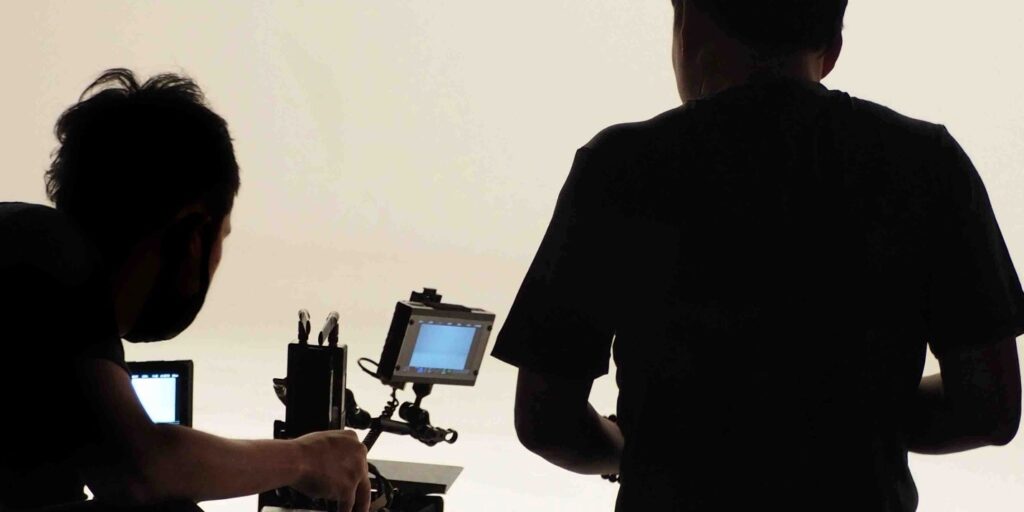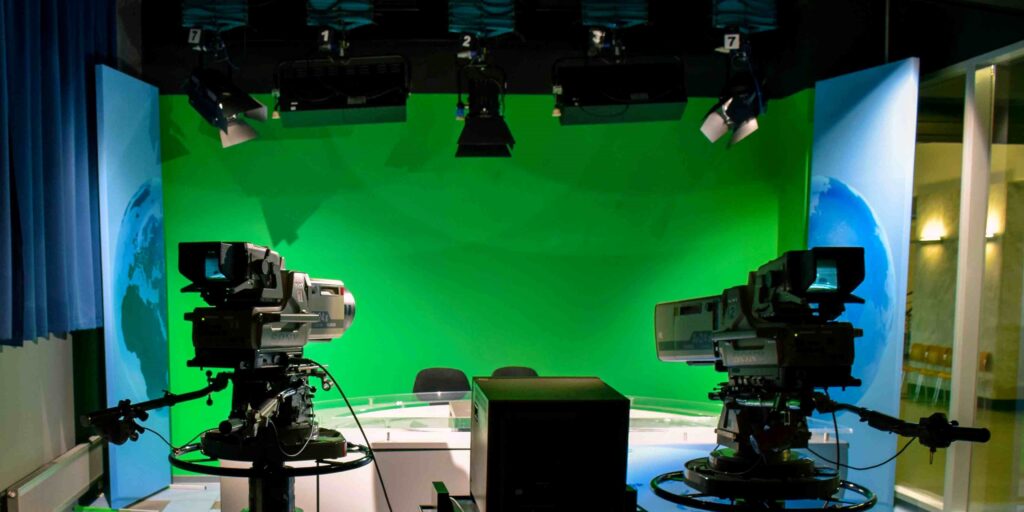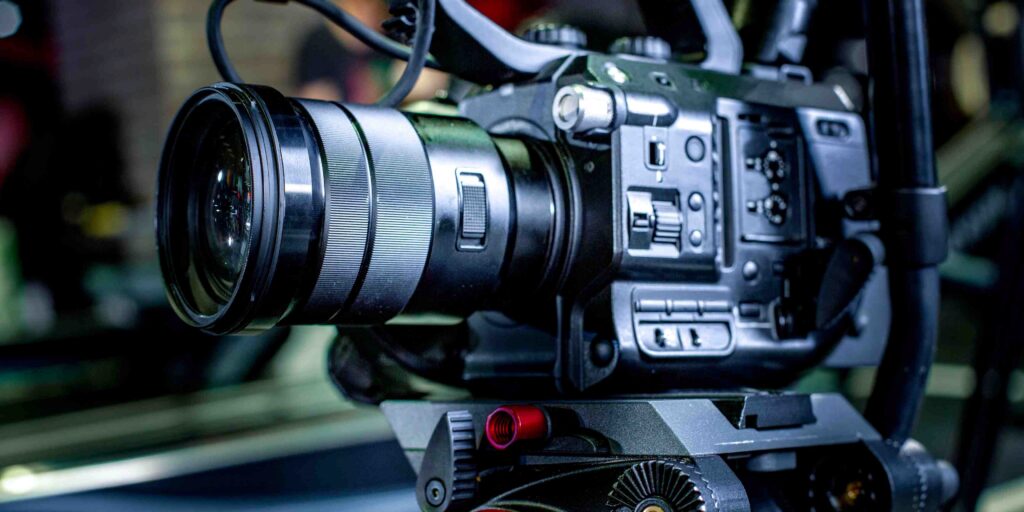Live streaming production is an innovative and cost-effective approach to broadcasting audio and visual content directly over the internet. It allows people to access content anytime, anywhere, in real time, as long as they have an internet connection. This makes live streaming extremely accessible, not just for audiences but also for production companies that are looking to reach out to them.
Benefits of using a professional live streaming production service include: increased exposure; improved quality due to better equipment; real-time interaction with the audience; being less expensive than traditional media outlets; and flexibility in terms of scheduling time slots or creating special events like webinars or conferences, etc. Additionally, you can use the analytical data from each stream session to help develop targeted campaigns accordingly, thus ensuring maximum return on investment (ROI).
A Breakdown of 3D Virtual Studio Sets and What They Can Do for You

3D virtual studio sets (or VSSs) offer broadcasters many creative options that weren’t available before, ranging from adding depth perception to a scene with multiple layers of depth effects; introducing dynamic lighting systems; allowing camera movement within the set itself; providing realistic environment settings such as reflections off surfaces; or even featuring custom objects like furniture, plants, and other props. All of these elements can work together to create a truly immersive experience for the viewer that is both visually captivating and informative.
VSSs are also extremely cost-effective and easy to use. As such, they have become increasingly popular for streaming services because of their ability to produce high-quality content without spending too much money on expensive physical studio sets or the costly production processes associated with them.
Tips for Choosing the Right Professional Services for Your Live-Streaming Needs
When selecting professional live streaming production services, it’s important to consider what kind of features you will need from them so that your broadcasts run smoothly and effectively reach their intended audience. Here are some tips on choosing the right professional service:
• Look at their portfolio; review recent projects that showcase their expertise in live streaming production, 3D virtual studio set design, motion graphics, etc.; and ask questions about any points of interest before committing.
• Check the terms and conditions carefully: ensure there are no hidden costs involved in using their services.
• Consider the technology used: inquire about the type of software they use in order to achieve desired effects or specific features such as chroma key compositing (green screen) effects.
• Research their team: assess the level of experience and expertise available on staff, as this will have a direct impact on the quality of your reports.
• Speak to references: contact previous clients and ask for feedback about their service offerings.
Understanding the Process of Live-Streaming Production and How it Works
Live streaming production involves various steps that must be taken in order to get your content ready for broadcast. It begins with preproduction planning, which includes setting up a timeline with important deadlines, designing the set or scene layout, researching stock audio/visual elements such as music or sound effects, etc., creating storyboards if necessary, arranging personnel such as talent or crew members, etc. Then you need to move onto production tasks like filming or recording footage according to plan—using either physical camera equipment or 3D VSS systems—and applying post-production processes like editing clips together into an engaging report before finally encoding them into an appropriate format (e.g., the RTMP streaming protocol) so they can be streamed online.
The Benefits of Working with an Experienced Team of Professionals on Your Project

When working with professional live streaming production services, it is essential to ensure that you are getting experienced experts who know how to get the most out of your project. An experienced team will be able to advise you on the best technologies and techniques for capturing quality footage, optimising it for delivery over the web and mobile devices, developing engaging storyboards with multiple camera angles or effects, etc., and making sure that your content reaches its intended audience in a timely and efficient manner.
They will also recognise potential obstacles before they occur by providing you with realistic timelines and budgets that can accommodate any last-minute changes. As such, working with an experienced team gives you peace of mind that everything is taken care of—from start to finish—so that all you have to do is focus on delivering a successful report that meets all the requirements set out at the beginning and achieves desired results.
Best Practises for Enhancing Your Live Streaming Experience
Once your live streaming production service has been selected, it’s time to think about how to enhance your viewers’ experience during playback. Here are some tips on achieving this:
• Ensure audio levels are balanced: create a soundscape that doesn’t swallow up dialogue or other important elements like music or sound effects, etc.; consider creating specific channels dedicated solely to background noise if necessary.
• Focus on the visuals: use creative techniques like camera pans and zooming to create a dynamic experience rather than one static shot; use 3D VSSs to create realistic environments with multiple layers of depth effects, etc.
• Manage audience: expectations by providing them with clear cues during the broadcast (e.g., announcing upcoming events in the chat window, etc.).
• Use interactive elements: such as polls, surveys, or quizzes at appropriate intervals throughout the livestream.
• Ensure smooth transitions between different sections or topics; avoid long pauses or abrupt changes that can disrupt viewing sessions.
Strategies to Help You Get the Most Out of Your Live-Streaming Production Services
Live streaming production services offer many advantages for broadcasters looking for cost-effective ways to reach their target audience. However, it’s important to remember that there are some strategies that should be implemented if you want to get the most out of your streaming service provider. Here are some tips on how you can do just that:
• Invest in quality equipment; make sure your internet connection is reliable and fast enough so that viewers don’t experience any buffering issues when watching content. Also ensure that all other technical aspects related to broadcasting (such as capture cards, devices, etc.) are of the highest standard to ensure smooth playback.
• Ensure your content is engaging; think about what kinds of stories or topics would make for more interesting viewing than others; consider using interactive elements at appropriate intervals in order to keep viewers engaged and connected throughout each broadcast session.
• Leverage data analytics: use analytical data provided by streaming platforms, such as viewership figures, user engagement rates, etc., to identify content that will have the greatest impact on the audience and adjust production accordingly.
• Partner with experts: work closely with experienced professionals who understand the ins and outs of live streaming services in order to make sure that all technical aspects related to production—from pre-production planning through post-production encoding—are taken care of properly.
The Different Types of Professional Services Available to Help with Your Live Streaming Needs
Professional service providers come in many forms when it comes to live streaming production services. Depending on your specific needs, you may require one or several types of expertise, including video production specialists responsible for designing 3D VSSs; motion graphic artists responsible for creating animations and effects; audio engineers who can set up sound systems and recording equipment; troubleshooting technicians who can help troubleshoot any technical issues that may arise during broadcasts; etc. Each type of expert will bring their own unique set of skills and knowledge, which can be used to help ensure that your project comes off without a hitch.
Cost Considerations When Contracting Professional Services for Live Streaming Production
When it comes to cost considerations when contracting professional services for live streaming production, there are several factors to consider, such as the following:
• The number of sessions you require: this could affect the rate per hour or day depending on how many hours are needed in total.
• Any upfront costs: associated with purchasing equipment or software.
•The types of service packages offered by different providers: some may offer basic packages while others include more comprehensive services at varying rates.
• The level of experience required from staff working on your project: experienced professionals usually command higher wages than those who are just starting out.
Utilising Technology to Maximise the Efficiency and Quality of Your Live Streaming Production Services
By leveraging technology during live streaming productions you can significantly increase both efficiency and quality. There are various types of technologies available today, including motion tracking sensors, graphics processing units (GPUs), streaming optimisation protocols like WebRTC, etc., that can be used to enhance broadcasts in various ways, such as creating realistic 3D virtual studio sets with multiple layers of depth effects, smoothing out transitions between scenes, reducing buffering issues by increasing server speeds, etc. It is important to ensure that the technology used is of the highest standard and compatible with industry standards; this will ensure smooth playback and increased viewer satisfaction.
Strategies to Help You Get the Most Out of Your Live-Streaming Production Services
When it comes to getting the most out of your live streaming production services, there are a few strategies that can help you achieve this goal. These include:
• Ensuring you have reliable connections: make sure all required hardware and software have been appropriately set up in order for broadcasts to run smoothly with no technical interruptions.
• Researching different service providers: comparing features offered by different companies and selecting one that best meets your needs at an affordable rate
• Identifying content that appeals specifically to your target audience: use analytics data available through streaming platforms like YouTube or Twitch, etc., in order to figure out what topics viewers are engaging with most so you can create content accordingly.
• Leveraging technologies: such as motion tracking sensors, graphics processing units (GPUs), etc. in order to maximise efficiency and quality
• Working closely with professional: experts throughout all stages of production, from planning through post-production
FAQs:
Live streaming production is an innovative and cost-effective approach to broadcasting audio and visual content directly over the internet. It allows people to access content anytime, anywhere, in real time, as long as they have an internet connection. This makes live streaming extremely accessible, not just for audiences but also for production companies that are looking to reach out to them.
Benefits of using a professional live streaming production service include: increased exposure; improved quality due to better equipment; real-time interaction with the audience; being less expensive than traditional media outlets; and flexibility in terms of scheduling time slots or creating special events like webinars or conferences, etc. Additionally, you can use the analytical data from each stream session to help develop targeted campaigns accordingly, thus ensuring maximum return on investment (ROI).
When selecting a 3D virtual studio set, you should consider features such as dynamic lighting systems, camera movement within the set itself, realistic environment settings such as reflections off surfaces, custom objects like furniture, plants, and other props, chroma key compositing (green screen) effects, etc.
The steps involved in live streaming production include preproduction planning, which includes setting up a timeline with important deadlines; designing the set or scene layout; researching stock audio/visual elements such as music or sound effects; creating storyboards if necessary; arranging personnel such as talent or crew members; etc. Then you need to move onto production tasks like filming or recording footage according to plan—using either physical camera equipment or 3D VSS systems—and applying post-production processes like editing clips together into an engaging report before finally encoding them into an appropriate format (e.g., the RTMP streaming protocol) so they can be streamed online.
When working with professional live streaming service providers, it is essential to ensure that you are getting experienced experts who know how to get the most out of your project. An experienced team will be able to advise you on the best technologies and techniques for capturing quality footage, optimising it for delivery over the web and mobile devices, developing engaging storyboards with multiple camera angles or effects, troubleshooting any technical issues that may arise during broadcast sessions, etc., as well as making sure that your content reaches its intended audience in a timely and efficient manner.
Tips for enhancing the viewing experience during playback include ensuring audio levels are balanced, focusing on visuals, managing audience expectations by providing them with clear cues during the broadcast (e.g., announcing upcoming events in the chat window, etc.), using interactive elements such as polls, surveys, or quizzes at appropriate intervals throughout the livestream, ensuring smooth transitions between different sections or topics, avoiding long pauses or abrupt changes that can disrupt viewing sessions, etc.
Professional services related to live streaming production may include video production specialists responsible for designing 3D VSSs, motion graphic artists responsible for creating animations and effects, audio engineers who set up sound systems and recording equipment, troubleshooting technicians who help troubleshoot any technical issues that may arise during broadcasts, etc. Each type of expert will bring their own unique set of skills and knowledge, which can be used to help ensure that your project comes off without a hitch.
Cost considerations when hiring professionals depend on various factors, such as the number of sessions you require, any upfront costs associated with purchasing equipment or software, the types of service packages offered by different providers, and the level of experience required from staff working on your project.
When it comes to maximising efficiency during live streaming productions, various types of technologies are available today, including motion tracking sensors, graphics processing units (GPUs), streaming optimisation protocols like WebRTC, etc., that can be used to enhance broadcasts in various ways, such as by creating realistic 3D virtual studio sets with multiple layers of depth effects, smoothing out transitions between scenes, reducing buffering issues by increasing server speeds, etc. It is important to ensure that the technology used is of the highest standard and compatible with industry standards; this will ensure smooth playback and increased viewer satisfaction.
Ensure you have reliable connections—make sure all required hardware and software have been appropriately set up in order for broadcasts to run smoothly with no technical interruptions; Research different service providers, compare features offered by different companies, and select the one that best meets your needs at an affordable rate. identify content that appeals specifically to your target audience—use analytics data available through streaming platforms like YouTube or Twitch, etc., in order to figure out what topics viewers are engaging with most so you can create content accordingly; leverage technologies such as motion tracking sensors, graphics processing units (GPUs), etc. in order to maximise efficiency and quality; Work closely with professional experts throughout all stages of production, from planning through post-production.

